What To Do In Case Of A Venomous Snake Bite While Outdoors
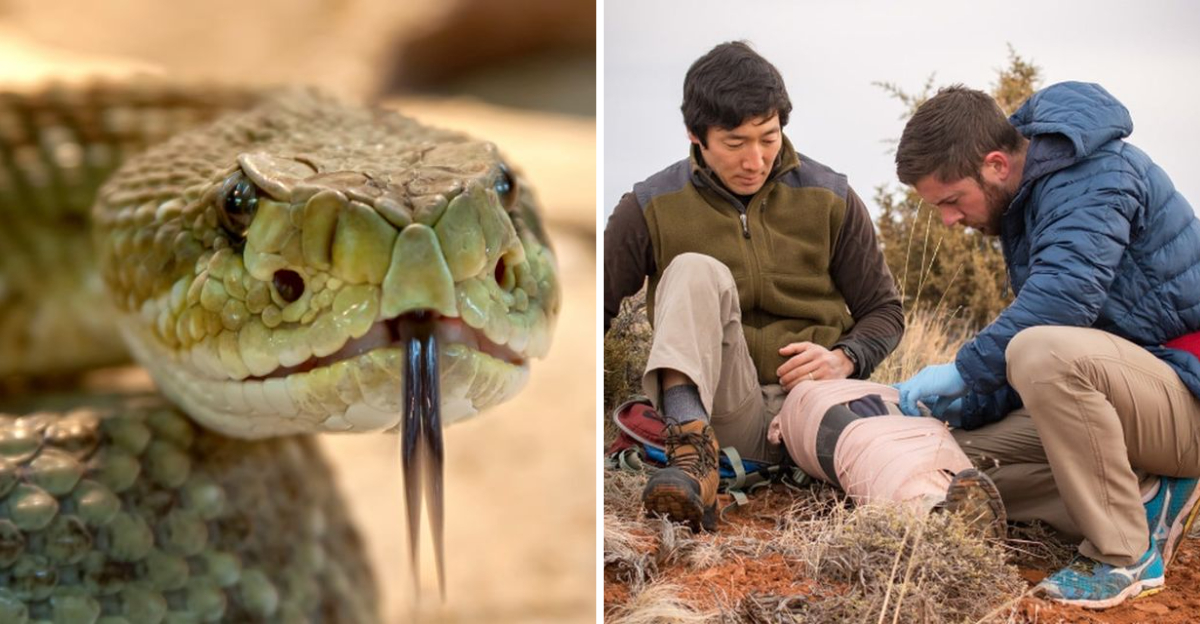
Venomous snake bites are scary, but knowing what to do can save a life. Every year, thousands of people get bitten by snakes while hiking, camping, or just enjoying nature.
Quick, correct action is super important – it could mean the difference between a hospital stay and something much worse.
Let’s go through the essential steps to take if you or someone with you gets bitten by a venomous snake.
1. Move Away From The Snake
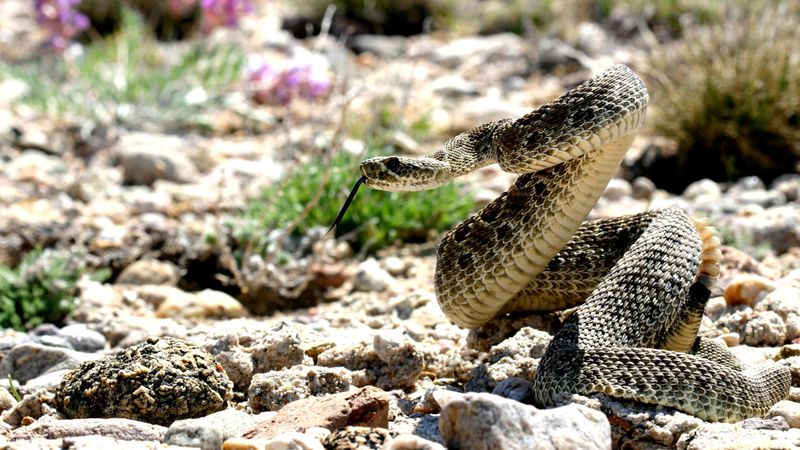
Your first priority is creating distance between you and the snake. Many bite victims get bitten multiple times because they panic or freeze near the snake. Calmly back away at least 20 feet from where you spotted it.
Remember that snakes can strike at a distance of about half their body length, so giving them space is crucial.
Don’t try to capture, kill, or photograph the snake – this leads to additional bites in many cases. The snake is probably just as scared as you are and wants to escape the situation too.
2. Stay Calm And Keep Heart Rate Low

Freaking out speeds up your heart rate, which can pump venom through your body faster. Take deep breaths and try to keep your pulse steady.
Sit down if possible and focus on slow breathing – in through your nose for four counts, out through your mouth for four counts. Remind yourself that most snake bites in North America aren’t fatal when properly treated.
Reassure the bite victim if you’re helping someone else. Your calmness will help them stay calm too, which is medically beneficial in this emergency situation.
3. Remove Jewelry And Tight Clothing
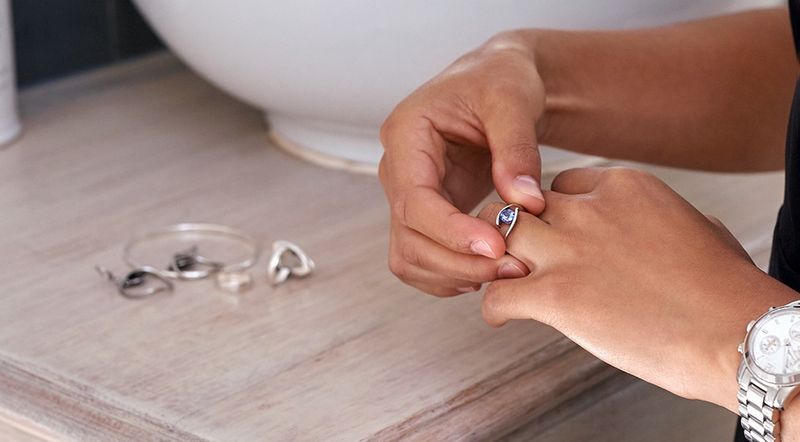
Swelling happens fast with snake bites. Rings, watches, bracelets, and tight clothes can become dangerous as the area puffs up.
Take off anything constricting near the bite area immediately. This includes watches, fitness trackers, rings, bracelets, and tight sleeves or pant legs. Cut clothing if necessary rather than pulling it over the bite.
The swelling from a snake bite can continue for hours and may be severe enough to cut off circulation if constrictive items aren’t removed. This simple step prevents additional complications during treatment.
4. Position The Bite Below Heart Level
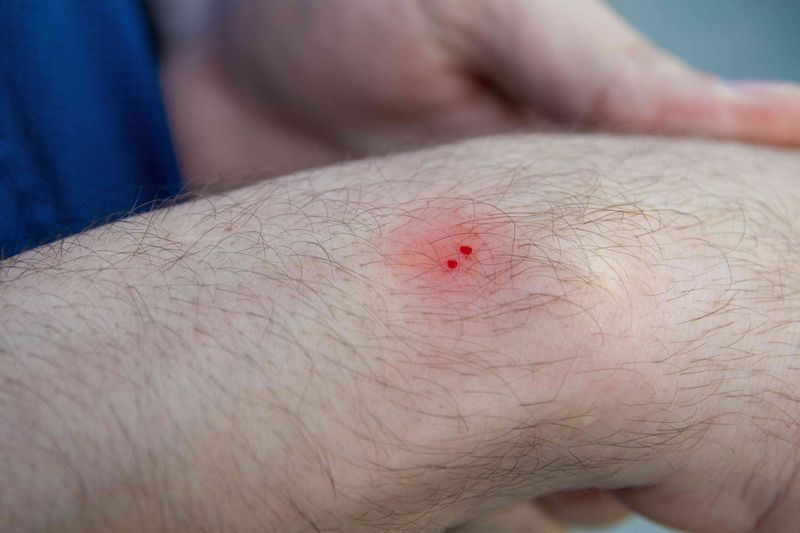
Gravity becomes your friend in snake bite situations. Keeping the bite below your heart helps slow the spread of venom through your bloodstream. If bitten on your leg, sit down and stretch it out in front of you.
For arm or hand bites, try to keep the limb hanging down naturally at your side. Don’t raise the bitten area above your heart – this is outdated advice that can actually make things worse.
This positioning takes advantage of basic physics to buy you valuable time while awaiting medical help. Every minute counts when dealing with venom in your system.
5. Clean The Bite Area Gently
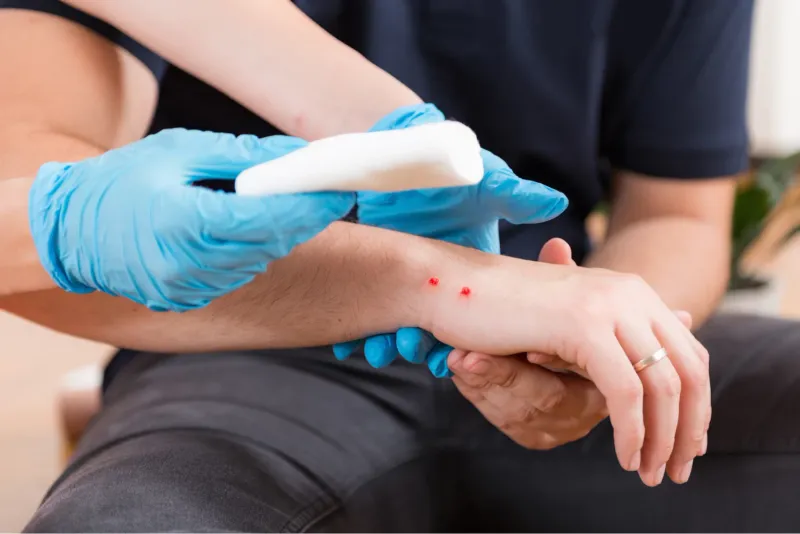
Bacteria from a snake’s mouth can cause infection alongside venom problems. If you have clean water, gently rinse the bite area – don’t scrub or irritate it.
Soap and water works best if available in your first aid kit. Pat the area dry with a clean cloth or gauze if possible, never rub it.
Avoid using alcohol, hydrogen peroxide, or other harsh cleaners that can damage tissue. The goal is simply to remove surface dirt and bacteria without increasing circulation to the area.
Clean in a gentle, outward motion away from the puncture marks.
6. Mark The Edge Of Swelling
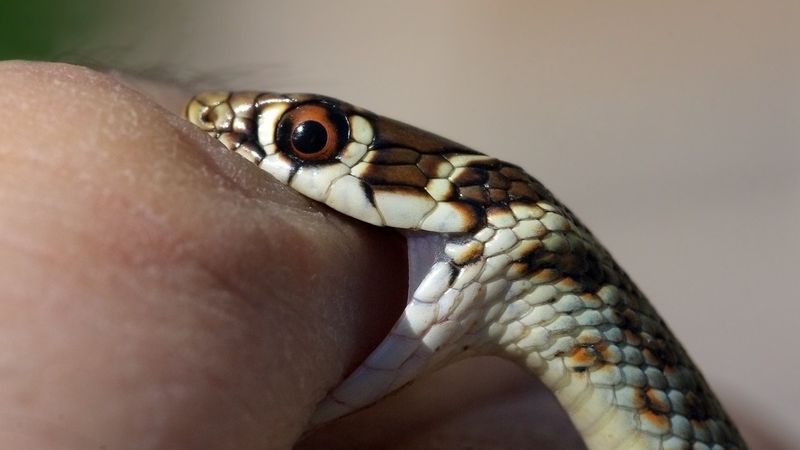
Tracking how fast and how far swelling spreads gives doctors crucial information. Use a pen to draw a circle around the outer edge of swelling and write the time next to it.
Every 15–30 minutes, check if swelling has expanded beyond your mark. If it has, draw a new line with the updated time. This creates a visual timeline of how the venom is affecting the body.
Medical professionals will use this information to determine how much antivenom might be needed and how quickly the venom is spreading. It’s a simple step that provides valuable diagnostic information.
7. Apply A Clean Bandage Loosely

Covering the bite helps prevent infection while you seek help. Place a clean bandage or cloth over the bite – not too tight, just enough to keep it clean. The bandage shouldn’t restrict blood flow or add pressure to the area.
You should be able to easily slip a finger underneath it. Some experts recommend a pressure immobilization bandage for certain snake species, but this requires specific training to apply correctly.
Standard first aid dressings work fine for most situations. The main goal is simply to keep the wound clean during transport to medical care, not to restrict the flow of venom.
8. Immobilize The Bitten Limb
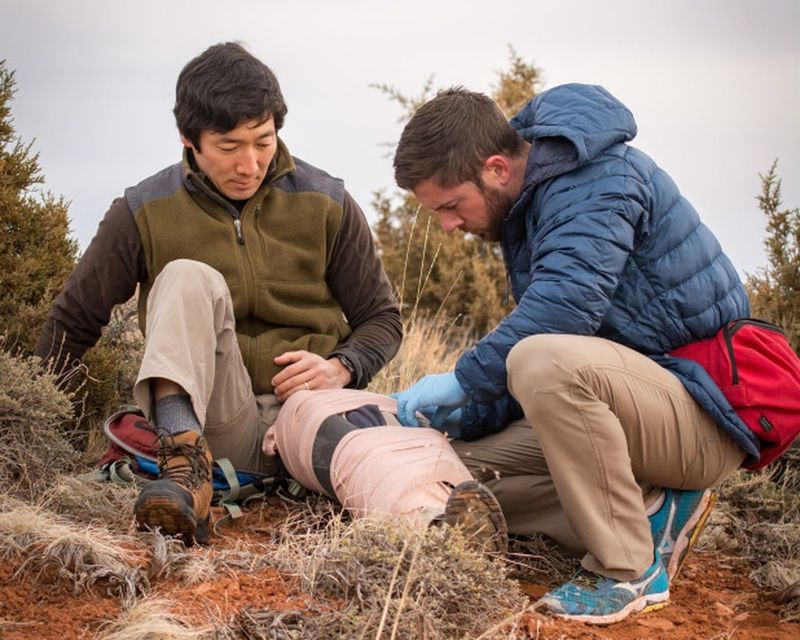
Moving the bitten area pumps venom faster through your system. Immobilizing the limb with a splint or sling helps slow venom spread and reduces pain.
For leg bites, use sticks or hiking poles wrapped with clothing to create a makeshift splint. Arm bites can be immobilized with a sling made from a shirt or bandana.
Keep the splint loose enough that it doesn’t restrict blood flow but firm enough to limit movement. The goal is finding balance – you need to limit motion without cutting off circulation.
This buys precious time while arranging evacuation to medical facilities.
9. Contact Emergency Services Immediately
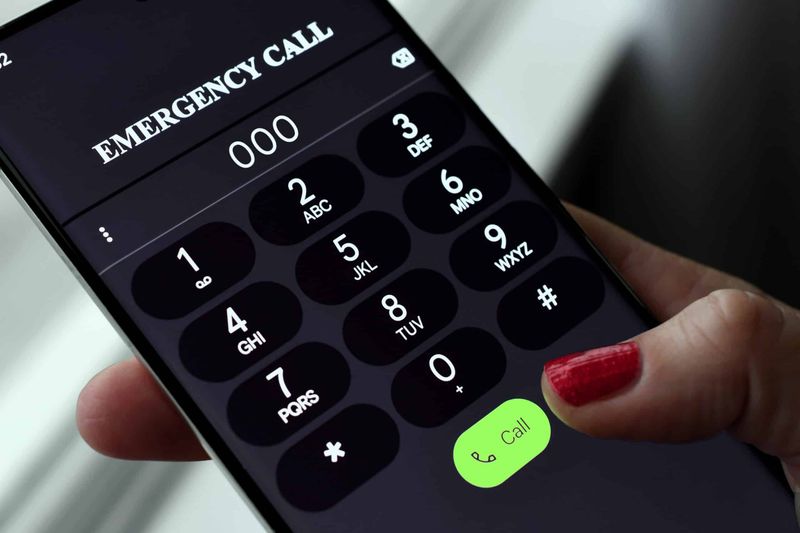
Getting professional medical help is absolutely critical – don’t delay making the call. Use a cell phone, satellite phone, or send someone for help right away.
When calling 911 or local emergency services, clearly state that you’re dealing with a snake bite. If possible, describe the snake – its color, pattern, size, and whether it had a rattle or distinctive markings. This helps emergency responders prepare appropriate treatment.
Many wilderness areas have poor cell coverage, so sending a companion for help while another stays with the victim is often necessary. Share your exact location using GPS coordinates if available.
10. Avoid Dangerous Folk Remedies
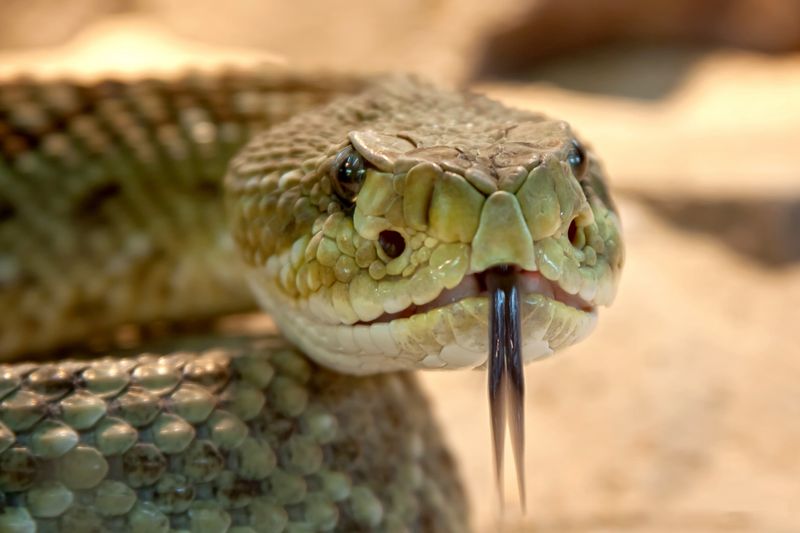
Movies show people cutting bites open or sucking out venom, but these methods actually cause harm. Never cut the bite, apply a tourniquet, use ice, or attempt to suck out venom. These outdated techniques can increase tissue damage, infection risk, and bleeding.
Electrical shock devices, marketed as “snake bite kits,” are equally dangerous and ineffective. Alcohol consumption after a bite accelerates venom absorption and should be strictly avoided. Modern medical science has debunked these methods completely.
Stick with evidence-based first aid while awaiting professional medical treatment – it gives the victim the best chance of recovery.
11. Transport Carefully To Medical Care
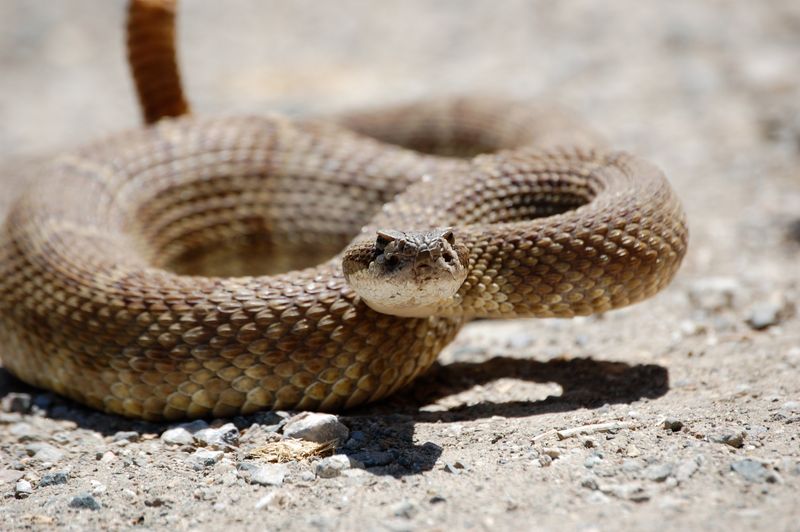
How you get to help matters almost as much as getting there. If possible, have someone else drive while the bite victim remains still in a comfortable position. Arrange transportation with minimal movement for the victim.
Walking long distances after a bite significantly increases venom circulation and should be avoided if possible. Helicopter evacuation is ideal in remote areas, but not always available. If self-evacuation is necessary, move slowly and rest frequently.
The bitten person should exert as little energy as possible, with companions helping carry gear and providing physical support during the journey to medical facilities.
12. Document Everything For Medical Staff

Details help doctors provide better treatment. Keep track of symptoms, timing, and changes in the victim’s condition to share with medical professionals. Note when the bite occurred, what the snake looked like, and how symptoms have progressed.
Record any changes in pain levels, swelling, discoloration, numbness, difficulty breathing, nausea, or vision changes. Take photos of the bite area if possible, especially if you marked the progression of swelling.
This information helps doctors determine which antivenom to use and how aggressively to treat. Even seemingly minor details can make a significant difference in treatment decisions.






